My Life with Project Fi: 5 Things I’ve Learned About Google’s Experimental Cell Service
Tech Lists Google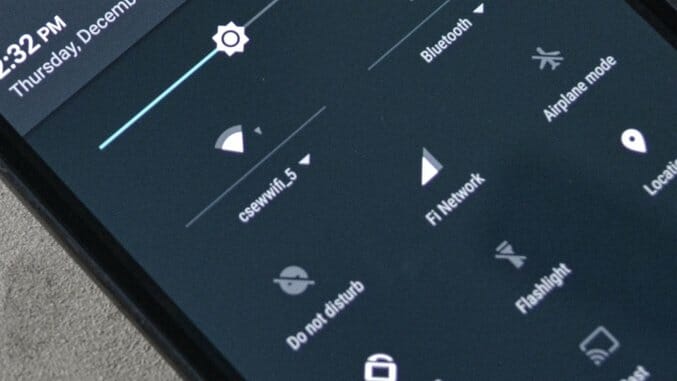
Like many people, when it came time to choose my next cell phone plan, I was riddled with anxiety. I had no idea which provider to choose, what deal was best or who might screw me over the worst. I was lost. Neck deep in frustration, I began to think very seriously about giving Google’s experimental service, Project Fi, a shot. That brought up a host of new problems. Will it work where I live? Will it work at all? Do I want a Nexus phone?
After considering my options carefully, I decided to give Mountain View’s take on cell phone service a chance. I’ve been using it as my primary carrier since November, and in those handful of months I’ve learned quite a lot.
Here are the five most important things I’ve learned during my life with Project Fi.
1. Switching is Easy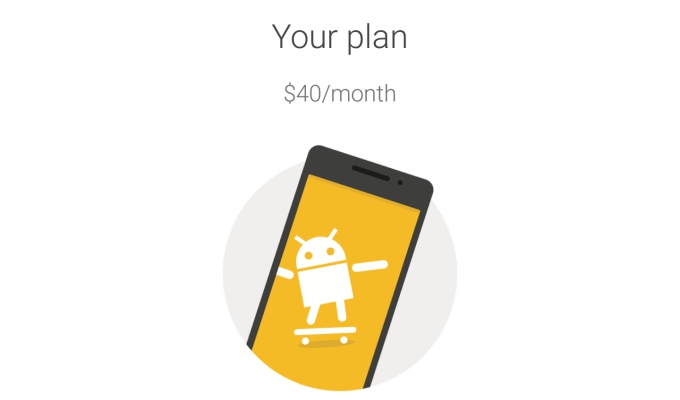
When it came time to leave Verizon for the greener pastures of Project Fi, I was riddled with anxiety over what the process would be like. I feared having to go to a Verizon store and deal with confused looks when trying to explain what exactly it was I was leaving Big Red for. Or, because my previous plan was shared with several other people, I had nightmares that my sudden departure would adversely affect them. Every worry I had was for naught, the transition process could not have been smoother. Even the time estimates Google offered, such as a 48-hour window for number transfer to be completed, failed to bend me out of shape. It took all of five minutes for my number to transfer.
It was clear from the outset that Project Fi was going to be a much different experience than a traditional carrier. My previous history with, primarily, Verizon and T-Mobile wasn’t a horror stories like ones you may have read online, but it was certainly anxiety-inducing. I, and I’m sure many others, have spent hours upon hours reading Verizon/T-Mobile FAQ pages, forums and subreddits trying to answer the simplest of questions to no avail. With Project Fi, everything worked as advertised, and if I did have a question, there were several different support options available, all of which are incredibly responsive.
2. The Tech Works As Advertised (So Far)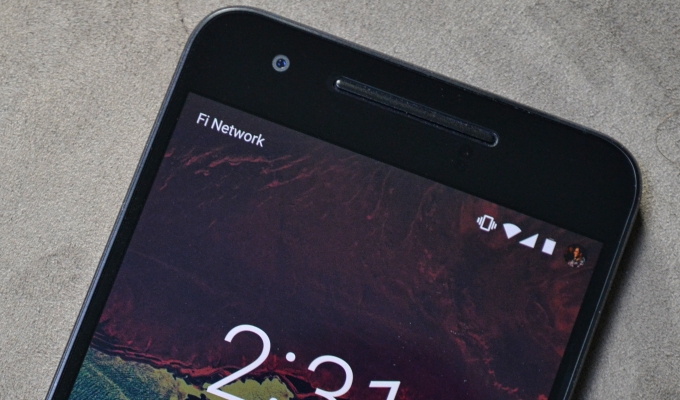
The big hook of Project Fi, technologically speaking, is its ability to hop between Wi-Fi or Sprint and T-Mobile service and smartly choose which option is the best at any given moment. It’s designed to work in the background and, unless you really want to know, you have no idea which cell service you’re using. The real feat is when your phone seamlessly switches from Wi-Fi to cell service, particularly if you’re on a phone call. I haven’t tested this to great length but, in my months with Project Fi, call quality has been equal to or better than the providers I’ve used previously. I never notice when, or if, it switches in the middle of a call and that’s how it’s supposed to work, though there have been some kinks along the way.
For one, my Project Fi Nexus 6P does not play well with my girlfriend’s Google Voice number. To be fair, we have not troubleshooted the issue much because it only persists with SMS (I can send to her, but not receive) and that is not our primary mode of communicating with one another. I did also run into an instance in which a friend called three times, one that I never received, one in which he could not hear me but I could hear him and a third that worked as it should. We never figured who was at fault, but it’s not a complication that I would label out of the ordinary for any cell service, and the fact that it happened on an experimental one isn’t particularly special.
Mobile data speed is another animal entirely. I live in a small town in Central New York where coverage isn’t great to begin with and I worried that Project Fi’s combination of Sprint and T-Mobile (both of which have mostly 3G with a smattering of LTE where I live) wouldn’t be enough to satisfy. Then I spent a few weeks in CNY with Big Red, and the results were just as lackluster as they were for friends with either Sprint or T-Mobile, so I decided to take the plunge. Project Fi hasn’t cured my coverage woes, of course, but it has performed just as well as Verizon did in the few weeks before I switched.
It is still something to keep in mind, and I would urge you to check out Sprint and T-Mobile’s coverage maps plus the Project Fi coverage map before you consider switching. I can say, if you’re like me and not a huge data hog to begin with but someone who relies primarily on Wi-Fi connections, Project Fi will be a solid experience. Besides my time spent in my primary location in NY, I spent a week or so in a better area for cell service (Detroit and the Metro Detroit area) and my experience there was promising. I had quick LTE service during my time and, save for the call misstep aforementioned, I never thought twice about my service, just trusted that it would work the way it should.
3. All About the Green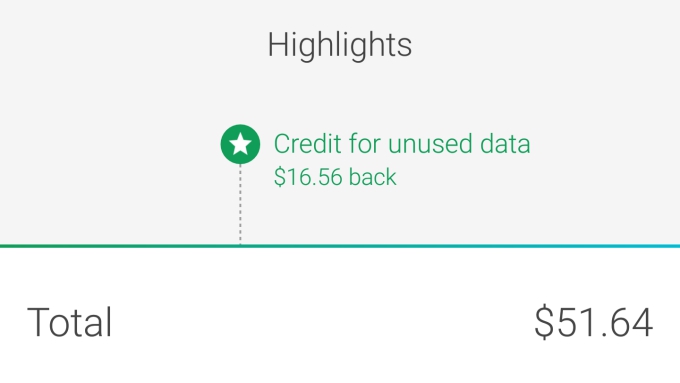
One of the best features of Project Fi is its hassle-free approach to billing. Prices are reasonable to begin with, $20 for basic call and text and then $10 for every line of data. Because I am not a huge data user, I have a plan with 2GB plus the monthly cost for my phone (roughly $23) bringing my grand total to about $65 every month when taxes are applied. But I’ve only ever payed that amount once, the very first month I had Project Fi. That’s because you’re credited for any data you don’t use and I almost always use an incredibly small amount. This brings my actual cost every month closer to $50. Take off the installment plan for my Nexus 6P and you’re looking at $30 a month. It’s a stellar deal. The service works essentially the same way as many prepaid plans but my experience with it has been superior to the $30 T-Mobile prepaid plans I’ve tried in the past.
Project Fi works perfectly for me because I’m the target user. I don’t use a lot of data, therefore I don’t pay much. If you are not that type of user, you very well may be better off with something like the T-Mobile plan, which offers unlimited data, with 5GB at LTE speeds. If you’re use aligns similarly to mine, Project Fi won’t disappoint. As much as the cell service working as it should and the data credit are great, the best thing the service has provided me is ease of mind. I do not constantly feel as though I’m missing something, like I could wake up the next day to a bill for phantom charges that I needed an advanced law degree to catch. I can just live.
4. You’re Special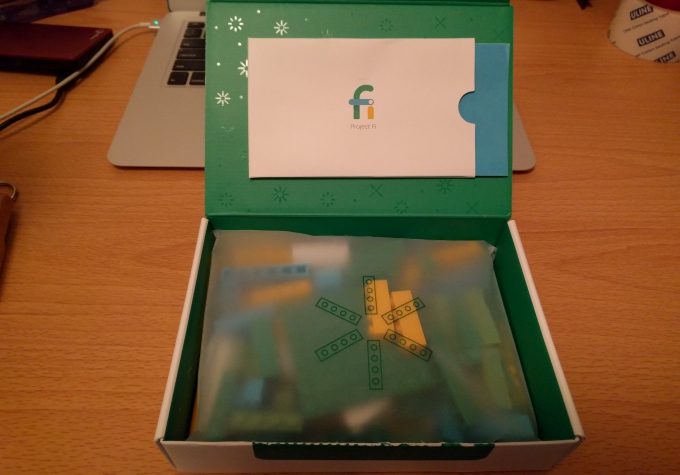
One of the well-covered aspects of Google’s cell service are the periodic gifts it sends users, such as the holiday Lego kits. It wasn’t the best thing in the world (honestly, it’s a terrible phone stand), but, as the saying goes, it’s the thought that counts. Never in my life would I have expected a cell phone provider to send me a gift unless there was a monstrous catch. Verizon would have secretly charged me $50 for the Lego kit, Project Fi is just happy I’m using the service.
Of course, this is a huge advantage of being a smaller project at a monolithic corporation with a knack for looking at stale models and shaking them up, but the cool factor is undeniable. It sounds lame, because it is, but I feel like I’m part of a larger machine at work with Project Fi. Not in the meat grinder way of modern cell carriers, that chew up and spit out users without thinking twice, but in the think tank manner. You, and your fellow Project Fi users are beta testers, and every month you use the service, or anytime you send in feedback, it’s one step closer to cracking the seemingly endless frustration that is the cell phone service industry.
5. It Needs To Be Open to More Devices
For as much as I enjoy Project Fi, and I don’t plan on switching back to a “traditional” carrier anytime soon, I can’t help but wish Google would scale it quickly. I understand the need for caution, and that the idea of Fi is for it to be small and experimental, but I want everyone I know to be able to use it if they want. And, in a way, they can. But they have to be willing to choose between three phones. Admittedly, one of those phones is the best Android device you can currently buy, but the other two (Nexus 6 and 5X) have substantial tradeoffs. If you look in forums and subreddits, you’ll find talk of using a Project Fi SIM in a non-supported device and it working, the caveat being that it only works on T-Mobile. I will admit that I have done this, and it does work, but it’s sketchy and brings back all the anxiety I shed when I initially switched to Project Fi.
The best solution is for Google to slowly ramp up the amount of devices supported by the service, but I have no outline for how it can do that effectively and smoothly. If it can find a way, and really take a chunk out of the pockets of AT&T, Verizon, Sprint and T-Mobile, it could spark a revolution. Sadly, Google isn’t in the business of revolution. It’s more likely to gently nudge.